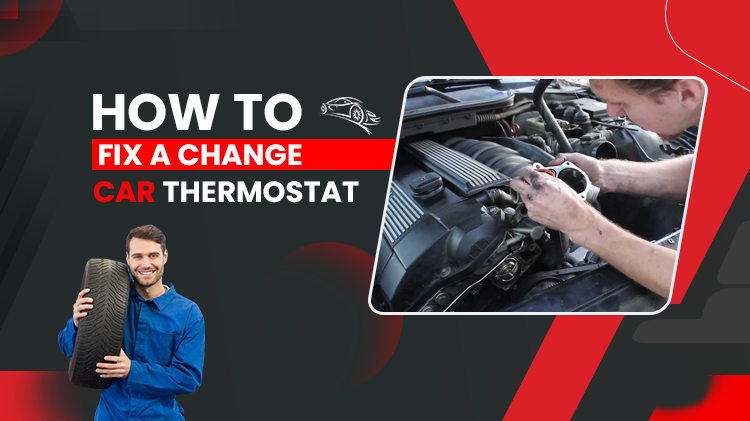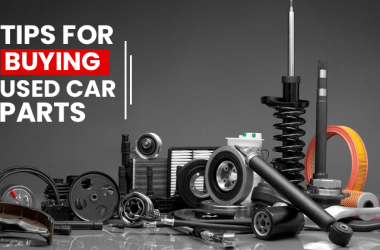The engine in your car is a finely tuned machine, and keeping it at the proper operating temperature is critical for its performance and lifespan. The thermostat is critical in regulating engine temperature and ensuring that the engine runs effectively. If your vehicle is overheating or running too cold, it may be time to change the thermostat. We’ll lead you through the process of changing your car’s thermostat in this blog by Motor Tiger, a trusted used engine company in the USA.
Understanding The Thermostat’s Role
Before we begin the replacement process, let us first understand why the thermostat is so important:
• Temperature Control: The thermostat controls the flow of coolant in order to maintain the appropriate engine temperature. This guarantees that your engine runs effectively and does not overheat.
• Fuel Efficiency: A properly functioning thermostat allows your engine to quickly reach its optimal operating temperature, improving fuel efficiency.
• Emissions Control: Keeping your car at the proper temperature also helps to reduce dangerous emissions.
Diagnosing Thermostat Issues
The first step in repairing a thermostat problem is determining whether it is the source of the problem. Here are some frequent indicators that your thermostat may need to be replaced:
• Overheating: If your engine overheats frequently, it could be due to a stuck closed thermostat that prevents coolant from circulating.
• Cold Running Engine: If your thermostat is locked in the open position, your engine will run excessively cold, resulting in poor fuel efficiency and performance.
• Fluctuating Temperature Gauge: If your temperature gauge alternates between hot and cold, it could be a sign of a faulty thermostat.
Gather Necessary Tools and Materials
Make sure you have the necessary equipment and materials on hand before beginning the thermostat replacement process:
• Purchase a high-quality thermostat that fits the make and model of your vehicle.
• Coolant: You’ll need to refill the coolant that was drained during the operation.
• Gasket or Sealant: Depending on the design of your vehicle, you may require a new gasket or sealant for the thermostat housing.
• Socket Set and Wrenches: Use these tools to remove bolts and hoses.
• Radiator Hose Clamp Pliers: These are handy for removing and reattaching hose clamps.
• Drain Pan: This is used to collect old coolant for proper disposal or recycling.
• Protect yourself from hot coolant and other hazards by using gloves and safety glasses.
Safety First
When working on your vehicle, safety should be your main priority. Here are some precautions to take:
• Allow the Engine to Cool: Never replace the thermostat while the engine is still hot. To avoid burns, wait till it cools down.
• Use Jack Stands: If you need to access the thermostat beneath the automobile, make sure it is securely secured by jack stands.
• Work in a Well-Ventilated Area: When dealing with coolant and other automotive fluids, adequate ventilation is critical.
Thermostat Replacement Steps
Now, let’s go over the steps for replacing your car’s thermostat:
• Unplug the Battery: To avoid electrical risks, unplug your car’s battery’s negative terminal.
• Drain the Coolant: Place a drain pan beneath the radiator drain plug and open it to allow the coolant to drain into the pan. Remember to properly dispose of the old coolant.
• Locate the Thermostat Housing: Typically, the thermostat is placed at the engine end of the upper radiator hose. The thermostat housing can be found by following the upper hose.
• Remove the Thermostat Housing: Remove any bolts holding the thermostat housing in place using your socket set and wrenches. Separate the housing from the engine block with care.
• Unplug the Battery: To avoid electrical risks, unplug your car’s battery’s negative terminal.
• Drain the Coolant: Place a drain pan beneath the radiator drain plug and open it to allow the coolant to drain into the pan. Remember to properly dispose of the old coolant.
• Locate the Thermostat Housing: Typically, the thermostat is placed at the engine end of the upper radiator hose. The thermostat housing can be found by following the upper hose.
• Remove the Thermostat Housing: Remove any bolts holding the thermostat housing in place using your socket set and wrenches. Separate the housing from the engine block with care.
• Reattach the Upper Radiator Hose: Reattach the upper radiator hose to the thermostat housing using hose clamps.
• Coolant Refill: Fill the radiator with fresh coolant until it reaches the proper level. The appropriate coolant type and mixture can be found in your vehicle’s owner’s manual.
• Bleed the System: Start the engine and let it idle for a few minutes. Allow any trapped air to escape by opening the radiator cap. Continue to add coolant as needed until the system has been completely bled.
• Check for Leaks: Keep an eye out for any coolant leaks around the thermostat housing and upper radiator hose.
• Reconnect the Battery: Finally, reconnect the battery’s negative terminal.
Testing and Final Checks
It’s critical to double-check everything after replacing the thermostat:
• Check the Heater: Turn on your vehicle’s heater to ensure it is producing warm air.
• Keep an eye on the temperature gauge to verify that it remains stable within the typical range.
• Check for Coolant Leaks: Look for any signs of coolant leaks, particularly around the thermostat housing and upper radiator pipe.
Conclusion
Replacing your car’s thermostat is a simple do-it-yourself project that can assist preserve the health and performance of your engine. You can tackle this project with confidence and keep your vehicle running smoothly by following the step-by-step guide offered by Motor Tiger. If you run into any problems or have any concerns about the thermostat replacement process, don’t be afraid to seek professional help. Your car will appreciate the care and attention you’ve given it. Have a safe and enjoyable drive!





